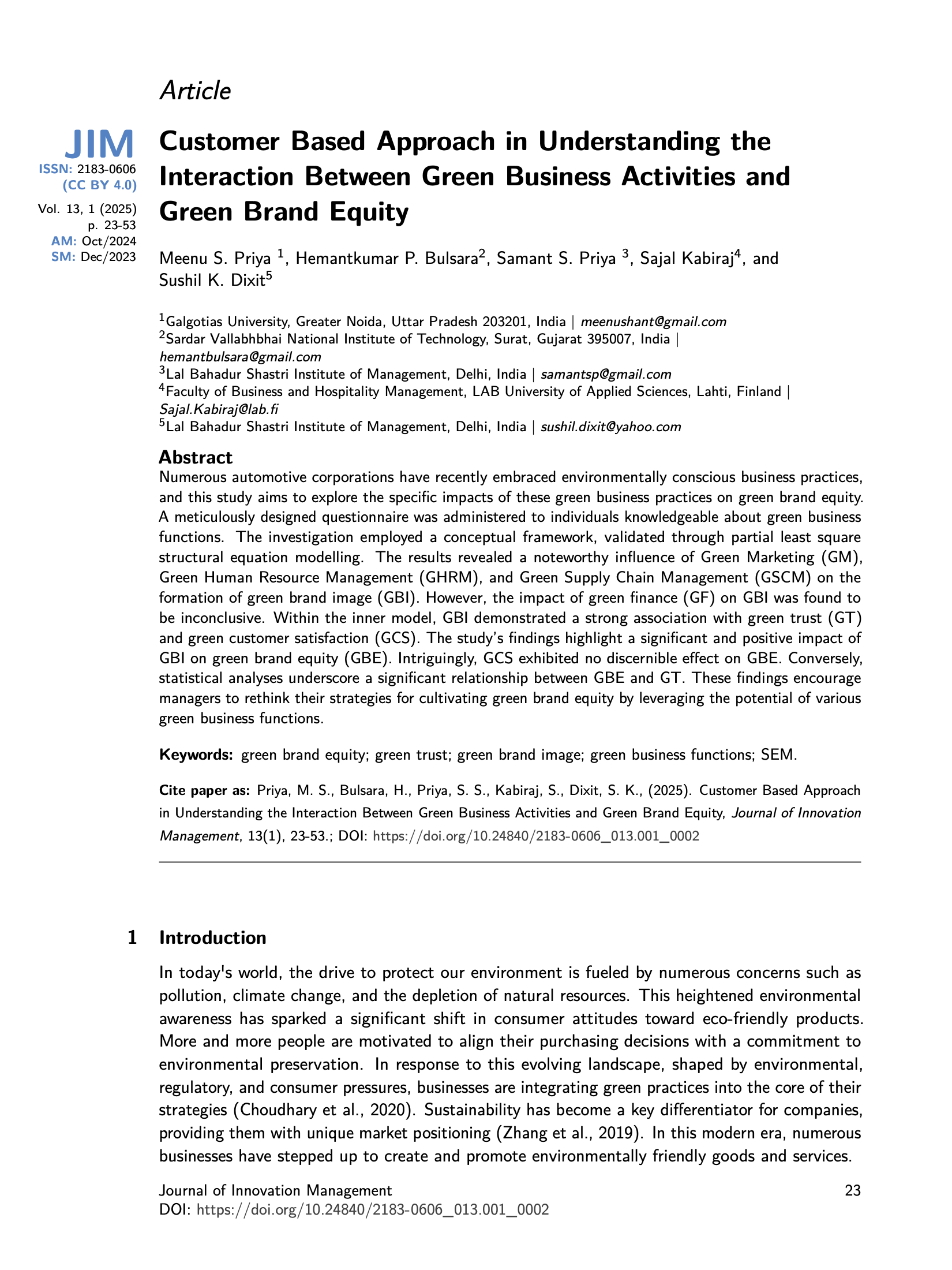Customer Based Approach in Understanding the Interaction Between Green Business Activities and Green Brand Equity
Main Article Content
Abstract
Numerous automotive corporations have recently embraced environmentally conscious business practices, and this study aims to explore the specific impacts of these green business practices on green brand equity. A meticulously designed questionnaire was administered to individuals knowledgeable about green business functions. The investigation employed a conceptual framework, validated through partial least square structural equation modelling. The results revealed a noteworthy influence of Green Marketing (GM), Green Human Resource Management (GHRM), and Green Supply Chain Management (GSCM) on the formation of green brand image (GBI). However, the impact of green finance (GF) on GBI was found to be inconclusive. Within the inner model, GBI demonstrated a strong association with green trust (GT) and green customer satisfaction (GCS). The study's findings highlight a significant and positive impact of GBI on green brand equity (GBE). Intriguingly, GCS exhibited no discernible effect on GBE. Conversely, statistical analyses underscore a significant relationship between GBE and GT. These findings encourage managers to rethink their strategies for cultivating green brand equity by leveraging the potential of various green business functions.
Article Details
Authors who publish with this journal agree to the following terms:
- Authors retain copyright and grant the journal right of first publication with the work simultaneously licensed under a Creative Commons Attribution License that allows others to share the work with an acknowledgement of the work's authorship and initial publication in this journal.
- Authors are able to enter into separate, additional contractual arrangements for the non-exclusive distribution of the journal's published version of the work (e.g., post it to an institutional repository or publish it in a book), with an acknowledgement of its initial publication in this journal.
- Authors are permitted and encouraged to post their work online (e.g., in institutional repositories or on their website) prior to and during the submission process, as it can lead to productive exchanges, as well as earlier and greater citation of published work (See The Effect of Open Access).

